Hundreds of stray threads fray at the edges of a mesmerizing geometric tapestry. But the image wasn't woven, or even drawn by hand -- it's the visual manifestation of a convoluted equation, crafted by Iranian math artist Hamid Naderi Yeganeh.
Of course, the fields of art and math have long run parallel -- think of the Golden Ratio and M.C. Escher's ever-winding staircases. Yeganeh himself cites Escher's "Reptiles" and "Circle Limit III" as inspirations for his work. Escher's beloved illusions, rooted as they were in mathematical concepts such as tessellation and the more head-scratching idea of hyperbolic geometry, are a testament to how math-oriented art can be.
Though the marriage of the two seemingly separate fields of study is a natural one, Yeganeh's captions for his works are best left to be deciphered by those who studied math beyond the high school level. An illustrious gray-and-purple work featuring soft lines that loop in the shape of a lotus flower bears the considerably less spiritual title, "4,000 Line Segments (3)." Its caption:
This image shows 4,000 line segments. For each i=1,2,3,...,4000 the endpoints of the i-th line segment are:
(sin(14πi/4000), cos(22πi/4000))
and
(sin(26πi/4000), cos(34πi/4000)).
For an image with such a technical construction, it's awfully meditative to look at, its loops and loops promising a pleasant maze for viewers.
It's unsurprising, then, that Yeganeh's works are as much his own construction as they are a computer's. The process of making them involves using a program he created to cull through the shapes that result from lines connecting on a plane. When he changes the values for each point connecting the lines, the shape of the work shifts. Initially, his results were simple -- one, comprised of 100 lines, resembled a fish. But over time, they grew increasingly complex.
Yeganeh has no ambitions to see his work hang on museum walls alongside human-made crafts. "My works are created by computer programs," he told The Huffington Post. "Therefore it is better to see them on a computer screen."
View more of Yeganeh's mathematical art:
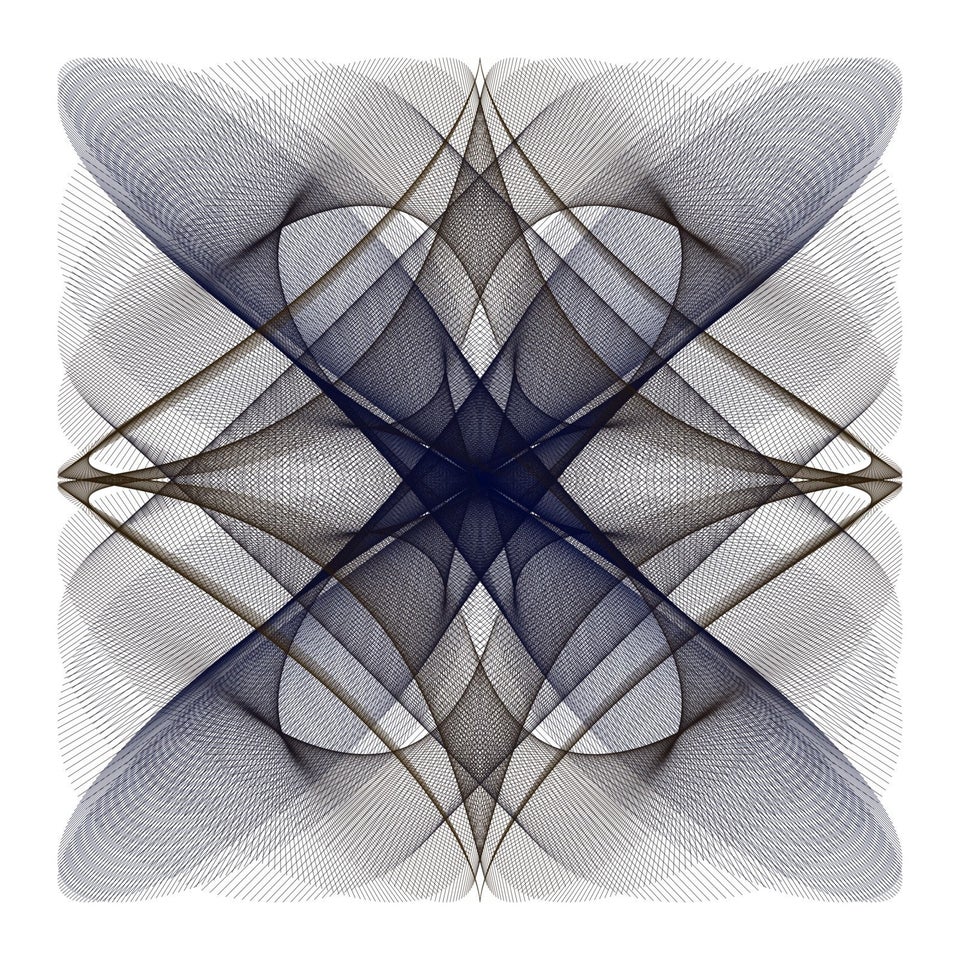
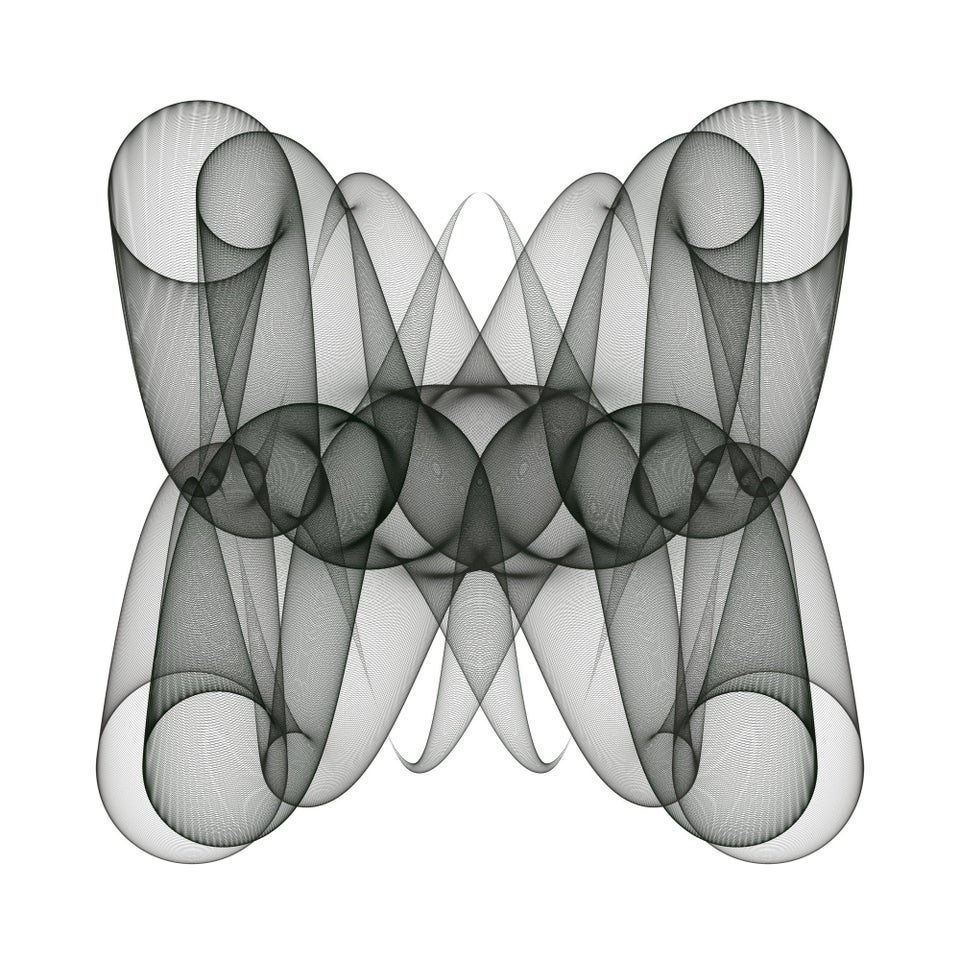
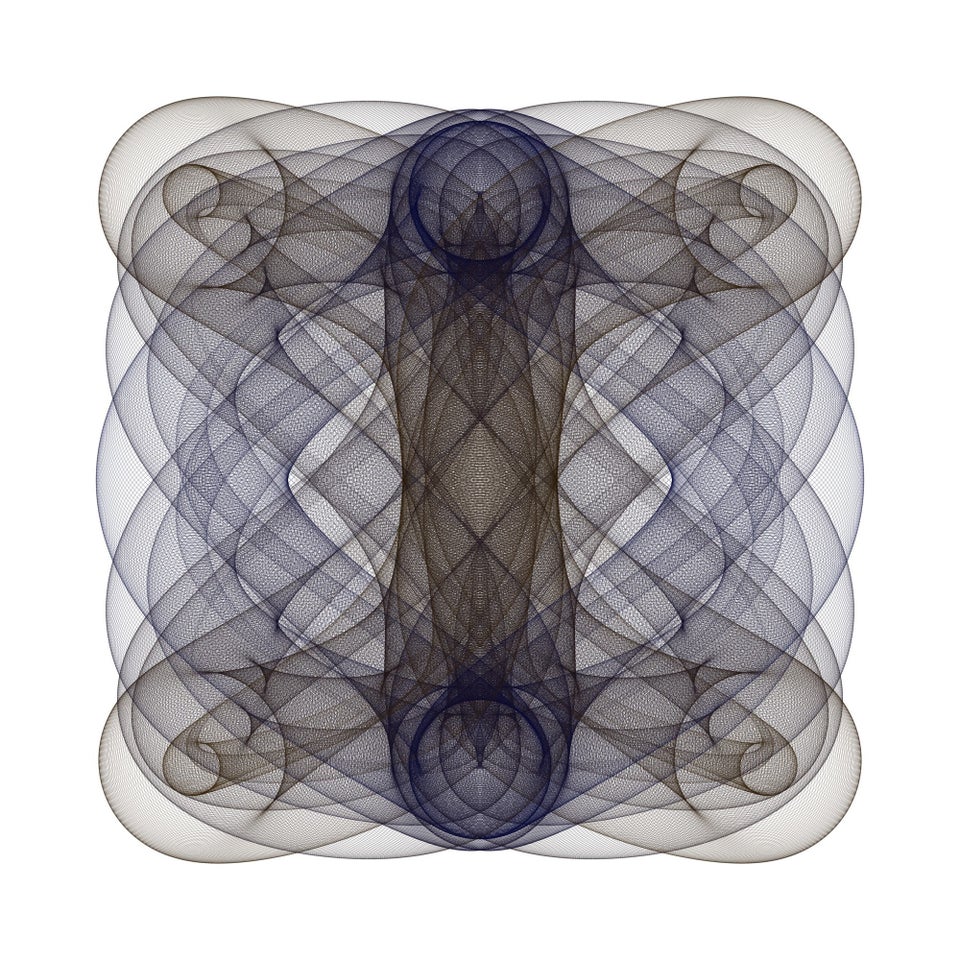
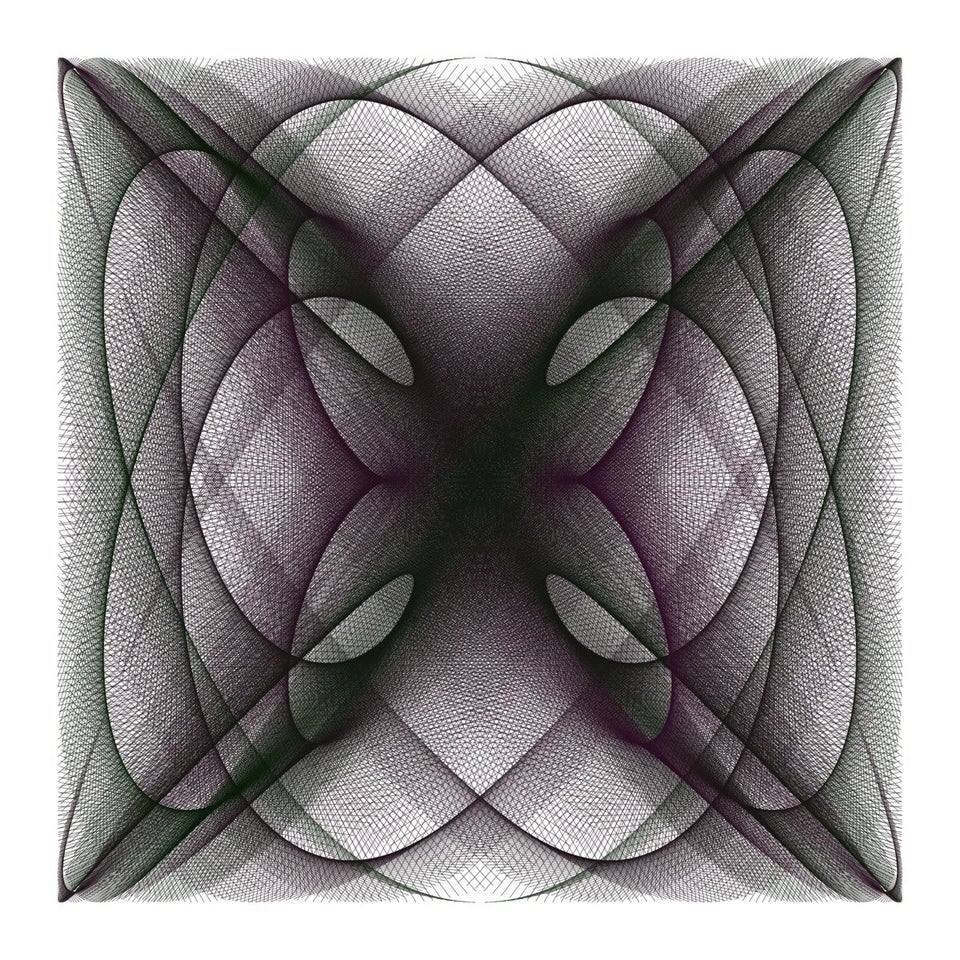
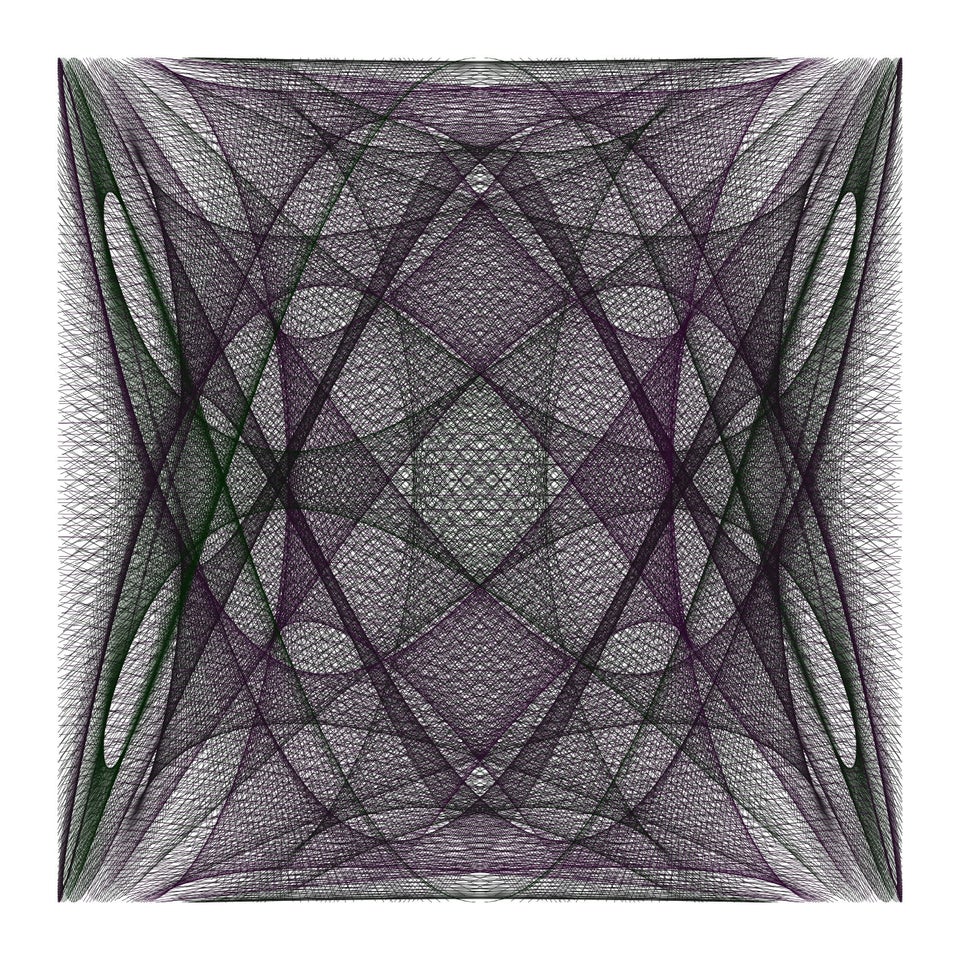
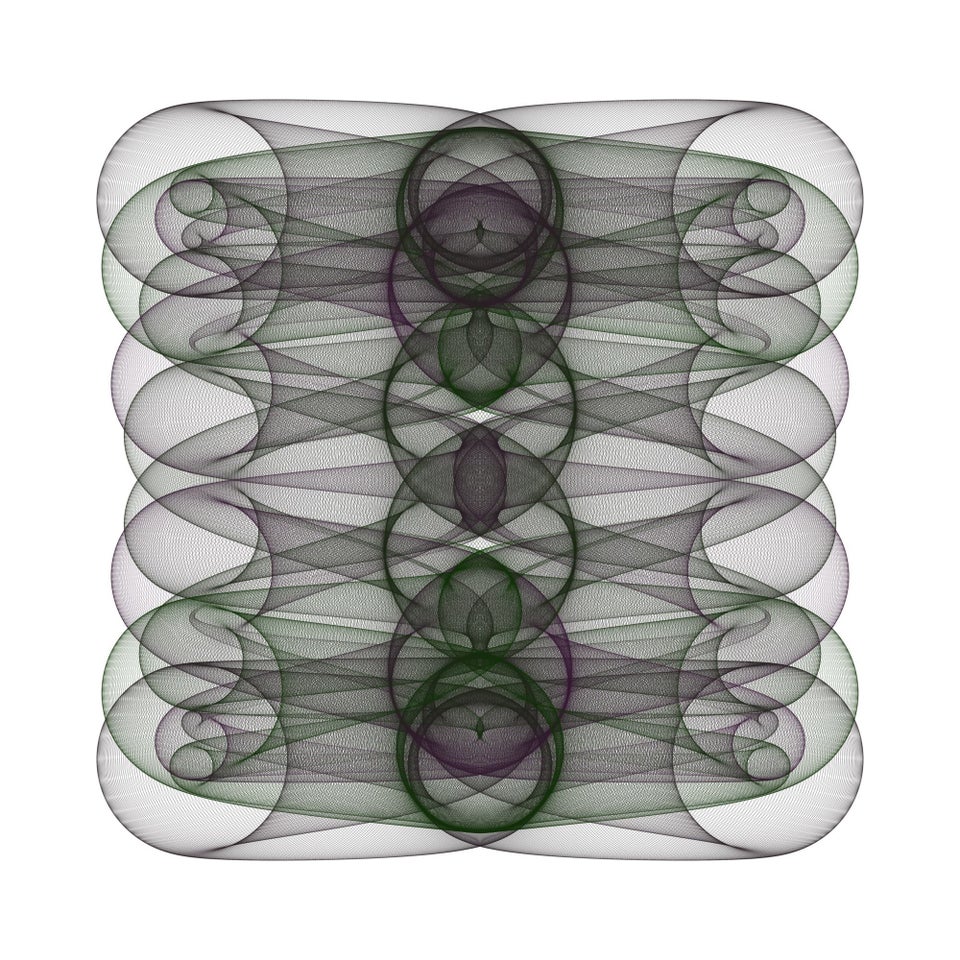
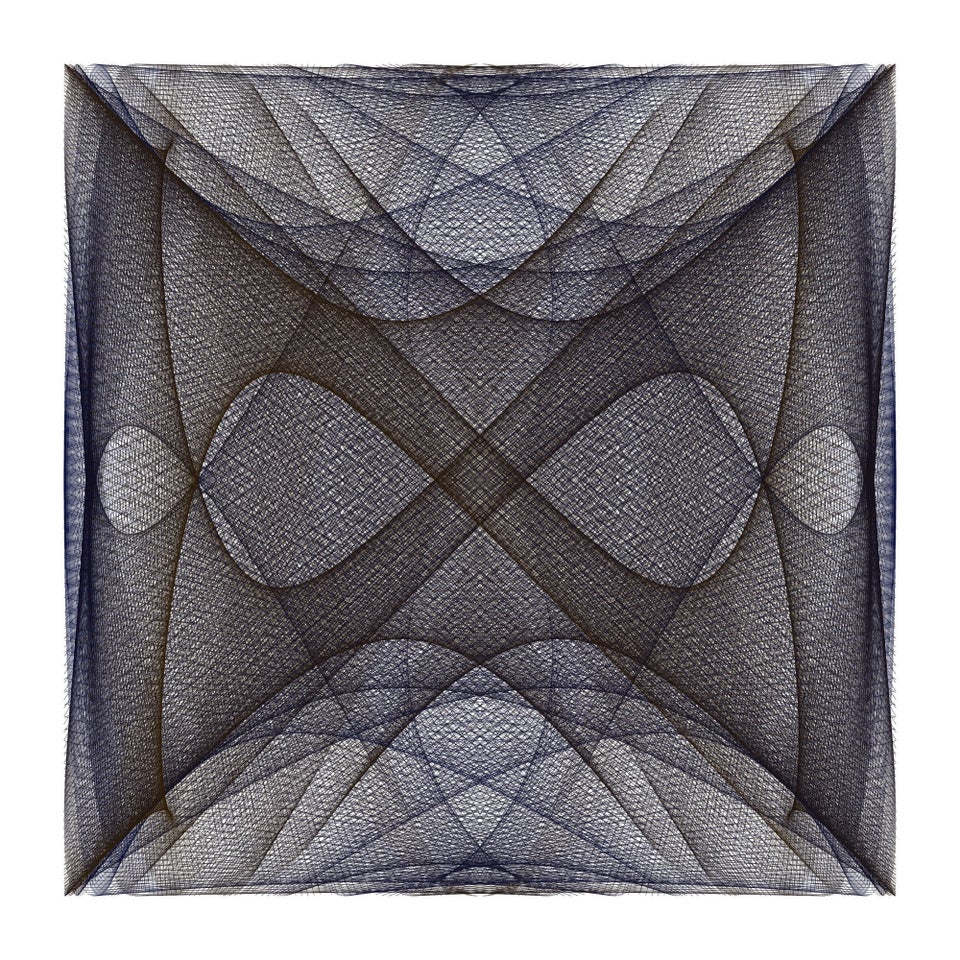
Also on HuffPost:
